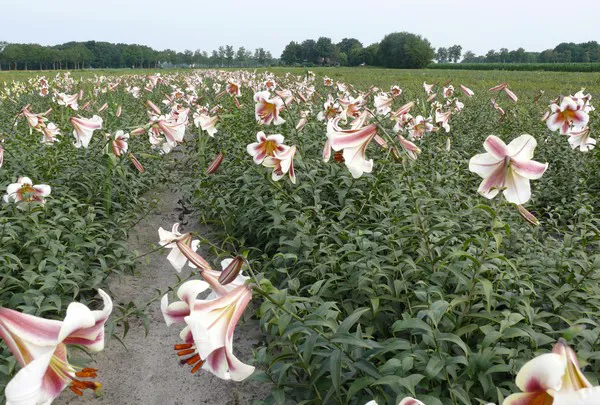The garden lilies are not only beautiful, but if they are well cared for, they continue to grow indefinitely and can multiply in various ways and therefore they permanently store CO₂. The calculation example below, breeder and grower Lily Company shows how much CO₂ their lily cultivation captures each year.

"We grow 110 ha of lilies. This adds up to 110 x 2,268 = 249,480 kg of fixed organic dry matter. Every year we store 286.902 kg CO₂ in our product in this way. In addition, the crop residues from the lilies that remain in the field after harvest add to an effective organic matter increase of 450 kg EOS / ha. This organic matter promotes several important functions in the soil. Organic matter is the main food source for all soil organisms that depend on organic matter for their energy and food supply. Organic matter plays a very important role in soil fertility. This applies to the supply of nutrients, the moisture and air balance and the soil structure. Organic matter also plays a role roll at the temperature of the soil. Organic matter in the soil is dark in color and therefore absorbs heat easily, so dark-colored soils heat up earlier in the spring than light-colored soils."
Click here for more information regarding the numbers mentioned
